The nervous system regulates the physiology of the human body.
The brain, spinal cord, and nerves comprise the nervous system.
This nervous system regulates the whole body through nerve impulses transmitted by neurotransmitters.
There are approximately 50 neurotransmitters in the human body.
Of them, some are rapidly acting while others are slow acting.
The list of neurotransmitters includes
Rapidly acting type
These neurotransmitters act very fast, like in a fraction of a second.
- Acetylcholine
- Noradrenalin (Norepinephrine)
- Adrenalin (Epinephrine)
- Dopamine
- Serotonin
- Histamine
- Gamma-aminobutyric acid (GABA)
- Glycine
- Glutamate
- Aspartate
- Nitric oxide (NO)
Besides the above, there are many other neuropeptides. These are relatively larger molecules, and these neurotransmitters act slowly.
Slow acting type
| Slow acting with a large structure | Neurotransmitter |
| Hypothalamic hormones | 1) Thyrotropin-releasing hormone 2) Luteinizing hormone-releasing hormone 3) Somatostatin (growth hormone inhibitory factor) |
| Pituitary peptide | 1) Adrenocorticotropic hormone (ACTH) 2) ß-Endorphin 3) a-Melanocyte-stimulating hormone 4) Prolactin 5) Luteinizing hormone 6) Thyrotropin 7) Growth hormone 8) Vasopressin 9) Oxytocin |
| Peptides acting on gut and brain | 1) Leucine enkephalin 2) Methionine enkephalin 3) Substance P 4) Gastrin 5) Cholecystokinin 6) Vasoactive intestinal polypeptide (VIP) 7) Nerve growth factor 8) Brain-derived neurotrophic factor 9) Neurotensin 10) Insulin 11) Glucagon 12) neuropeptide-Y |
| From specific tissues. | 1) Angiotensin II 2) Bradykinin 3) Carnosine 4) Sleep peptides 5) Calcitonin |
| Other amino-acids | b-alanine, Taurine l-Cysteine, l-Homocycttein |
- Neurotransmitters are the chemical messengers released at nerve junctions.
- They are released into the junction of two neurons (synaptic cleft), and then they act on the receptors present on the next neuron to continue the signal.
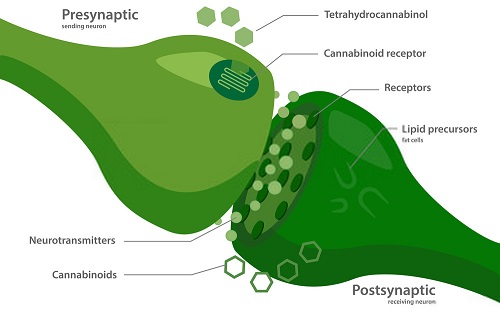
- Thus, they help our brain to control the functions and movements of our body organs.
- There are different types of neurotransmitters with diverse functions in the body.
- These organic substances have a short span of action.
- Their action lasts for a fraction of a second at times.
- But some of them produce action for a long time.
- Based on their role in the body, they can be studied as
a) Classical neurotransmitters (fast-acting)
b) Non-classical ones. (slow and long-acting)
Classical neurotransmitters
- These are the ones with a wide distribution in the body and have a larger role in physiology.
- Any small change in their quantities or functions will lead to disorders.
- Neurotransmitters carry many functions in the body, and some of them are specifically designated for certain roles.
Acetylcholine
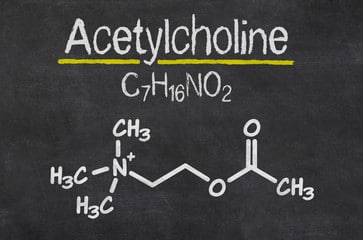
- Acetylcholine is a major neurotransmitter in the brain, spinal cord, and peripheral nerves. It is also found in Red blood cells and other cells in the body.
- It is synthesized in the neurons and released at the nerve endings to pass on the nervous stimuli postsynaptically.
- It is a part of the parasympathetic system and is released at synapses. It exerts actions to neutralize the effect of the sympathetic system.
- Acetylcholine is involved in almost all body functions like heartbeat, respiration, digestion, excretion, reproduction, etc.
Functions of Acetylcholine
- Acetylcholine enhances the secretions in the digestive system, exhalation in the lungs, urination, constriction of the pupil in the eyes, etc.
- It is the major neurotransmitter secreted in both preganglionic nerve endings of both the sympathetic and parasympathetic nervous systems.
- It acts through Muscarinic receptors like M1 and M2 and nicotinic receptors in the skeletal muscles like N1 and N2.
- Deficiency and a rise in the levels of acetylcholine lead to many diseases and also toxic effects.
Examples of diseases include parkinsonism, Alzheimer’s disease, glaucoma, etc.
Dopamine
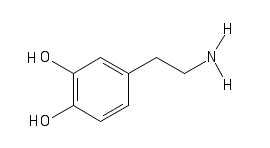
- Another important neurotransmitter is related to the central nervous system.
- But it is mainly confined to the brain, spinal cord, and a few nerves.
- It affects moods like fear, anxiety, and memory.
- It acts through receptors like D1, D2, and D3. Disorders due to its deficiency or rise include depression and Parkinsonism.
Norepinephrine
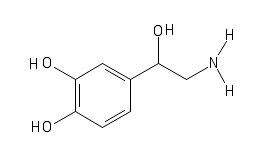
- This is also widely distributed, and unlike acetylcholine, it is confined mainly to the sympathetic system.
- It is secreted in the postganglionic nerve endings of the sympathetic system. It acts through adrenergic receptors like α1, α2, and β1, β2.
Functions: Norepinephrine has functions that are comfortable to the body. It produces sympathetic actions in different organs.
Epinephrine
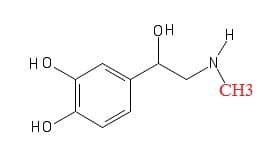
- This is similar to nor-epinephrine in terms of actions and also chemistry.
- But it is present in more quantities in blood and peripheral body organs and, to a small extent, in the brain.
- In the periphery, it is released by the adrenal medulla.
- It is involved in stress regulation and is also called a flight or fight hormone.
- It acts through similar receptors as epinephrine.
- Its quantity levels rise in the body and are indicative of stress or struggle.
Serotonin
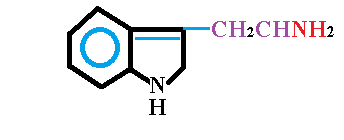
- It is found in large quantities in the intestine, platelets, and also the brain.
- It is recently found to regulate stress, sleep, mood, and hemostasis (blood coagulation).
- It acts through 14 sub-types of serotonin receptors like 5HT1, 5HT2, 5HT3, 5HT4, 5HT7 and their sub-types.
- Its deficiency or change is seen in disorders like depression, schizophrenia, etc.
Histamine
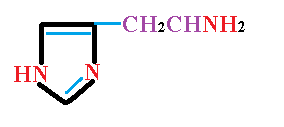
- Unlike others, this substance is widely distributed in tissues.
- It is called an afferent neurotransmitter as it initiates the sense of itch and pain at sensory nerve endings in the skin and other regions.
- In the brain, it controls functions like wakefulness, body temperature, thirst, etc.
- In the gut, it is involved in gastric acid secretion.
GABA (gamma-aminobutyric acid)

- GABA is another neurotransmitter present predominantly in the brain.
- It controls nerve conduction, electric potential in the brain, and muscle tone. Its deficiency leads to epilepsy.
- It acts through GABA receptors, which regulate chloride ion transport into nerves.
- This neurotransmitter plays a key role in epilepsy or convulsion disorder. It has an inhibitory effect on brain conduction.
Glycine
- Glycine is an amino acid that acts as an inhibitory neurotransmitter.
- It is present in the central nervous system, i.e., the spinal cord and brainstem.
- It acts through Glycine receptors in the spinal cord and brain and inhibits the motor neurons
- This Glycine is crucial in regulating motor control and reducing neuronal excitability.
- It inhibits nerve impulses and helps maintain balance in the nervous system. Thus regulating movements and preventing excessive neural activity.
- Glycine irregularity is linked to neurological disorders like startle diseases and spinal cord injuries.
Glutamate
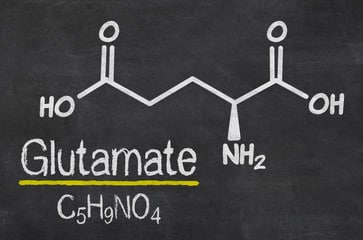
- This is a neurotransmitter found predominantly in the brain and an amino acid in the rest of the body.
- It acts through NMDA and AMPA receptors. It is involved in memory and learning.
- It is primarily an excitatory neurotransmitter.
- When the brain undergoes oxygen-deficient stress or physical injury, it is released into the extracellular space. This can be devastating, leading to nervous tissue damage (excitotoxicity).
This phenomenon is mainly seen in asphyxia babies.
Aspartate
- It is also called aspartic acid, an amino acid that functions as an excitatory neurotransmitter in the central nervous system.
- It activates NMDA receptors that are involved in synaptic plasticity (an ability of synapses to strengthen or weaken over time, based on activity that is essential for cognitive function)
- It plays a significant role in synaptic transmission and is involved in processes such as learning and memory.
- Aspartate dysfunction leads to neurodegenerative diseases and epilepsy. Further, excessive excitatory neurotransmission leads to excitotoxicity, which damages neurons.
Nitric oxide
- Nitric oxide is an interesting neurotransmitter.
- It is a tiny molecule that synthesizes when required and is not stored like other substances.
- It is involved in behavior and memory.
Non-classical neurotransmitters
- These are less widely distributed and also have few functions in the body.
- Also, minute changes in their quantities will not affect or lead to major disorders.
- Due to their essential role in body physiology, neurotransmitters are studied in anatomy and physiology, pathophysiology, and pharmacology.
- They are so quick in action and retraction. They can be compared with hormones as they have similar properties and modes of action.
- Hence, we can conveniently call them neuro-hormones.
- These neurotransmitters are primarily synthesized within the neuronal cell and stored in vesicles (sacs).
A change in voltage potential along the nerve membrane helps release these neurotransmitters into the synapse.
I’ve been looking into nootropics and for me to understand how they work, I have to understand what some neurotransmitters do besides dopamine. Awesome site and thank you. Stay safe
Kindly Review and Correct the Typographical errors in the Data and also an Important mistake to be corrected is the abbreviation of GABA. GABA is gamma-Aminobutyric acid not gamma amino benzoic acid as mentioned above.
Hi Sasi, thanks for stopping by and pointing out the errors. The article is updated now.
A good compendium! Thank you! You can raise serotonin by supplementing trypophan btw, this will increase your mood regulation and feeling of status. You can check eatcfit